#ibm pc-line
Explore tagged Tumblr posts
Text
Project М30 – final for summer

Summer has crossed the finish line, and it ends. A warm September too. And it is a time for have some result for summer. M30 – it is old computer. And its metal case was in rust. And, I, from time to time, periodical, to rub it, rub for remove rust. I do, that things – to rub and remove rust.

And, in last attempts, I, already, do not use tool for removing rust. And, just, simply, take a metal brush into the hands. And put on gloves. And rub. Rub and rub. It is main – main things you need to do with it. Methodically to rub with metal brush.


I pay attention to one thing. That metal is something like still with rust. But with every new attempt some part of rust layer is removing. So, it is going to be less and less rust, and, it is less and less with ginger color. But, to rub - it is for a, really, long time!

Who knows, if to rub, extremely, too long – maybe, it is possible to make it - like new condition. And, to rub until white. Or rust will come back a little. Who knows.

But, I am plan some aim, for now. To remove rust. As, it is a layers of rust, several layers. And, just to have with the result a little dark metal case. And, I am rather good with this. And, I rub by parts, one fragment after another. For example, I rub some little square form fragment. And I rub it. This thing requires time and a physical strength. And, ok, I go tired. So, at first things are going good, as uou just start, it is good goes, easy and funny! And, after, you see, that you are going to be tired and process is slow down. So process, slow rather fast.

And most main thing – rust is removing. It is with a result a dark metal. Main – it is to rub with metal brush. One fragment of case after another one!

Maybe, it is a main result! So, I can’t keep up all the things, I still not complete all the case. But, partially, it is clear already. It is a thing of tech and time! For the last parts. I think, that I will have no problem to rub till complete result.

One more interesting moment. About a hard receive places of case. Bends. And some elements where brush cannot reach. So that points - it is, they are, yes, some moments. It is good to think how to do this later. And taking into account, that cleaning process, it is rather long process in time. And, if brush not receive some parts, fragments, so this is a worse with the final result. Nail, maybe, to use. But, hard to receive parts – it is a next step.

So, during this stage, I will do it, at home, already, in a home condition, to continue to rub from a rust. And, to get a dark color of metal. And, about a hard receiving place – will think about it! Next stage – it is, also, good to rub from rust all the other parts! I do it for a little time. But, it is still a big work there! Rust is removing, something like, a layer after layer. You remove one layer with rust, then next one. And, again, it requires a strength and time, you need them.


And metal case - I do for a long time, already. And result – it is good to see now. Dark color metal. As a result. In a place, where it was a layer with rust. Very remarkable ginger and intense.

So, now will to continue this in a home condition! And, this is such a final moment for a summer! So, this is a result, finish line for summer about M30. About how it is to rub from rust. So, everything is goes good! And, in main, it is interesting result! So, you have darker metal! As a coffee or a tea! Well, ok. Absolutely, another color. I just, for a final words, want to compare it with something! Because after that kind of things, you wanna to eat something and to drink something! Tea! Canned food is good!

iron (hardware) and programs. From time to time i restore computers, retro computers. Try retro soft. Check some programs. And write about all of these. Dima Link is making retro videogames, apps, a little of music, write stories, and some retro more.
WEBSITE: http://www.dimalink.tv-games.ru/home_eng.html ITCHIO: https://dimalink.itch.io/ GAMEJOLT: https://gamejolt.com/@DimaLink/games
BLOGGER: https://dimalinkeng.blogspot.com/ TUMBLR: https://dimalink.tumblr.com/
#old computers#286#retro computer#rust#remove rust#repair#restoration#summer season#finish line#some result#pet project#project#dark metal#metal brush#rust layer#like new#dark color#metal case#pc case#ibm pc#ms dos#80s
6 notes
·
View notes
Text
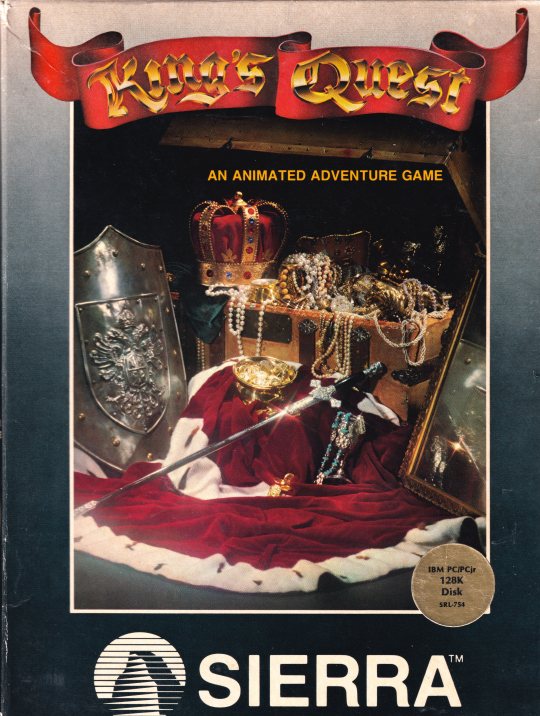
King's Quest for the IBM PC jr
#Sierra#Sierra On-Line#Sierra Online#On-line Systems#King's Quest#Kings Quest#KQ1#King's Quest 1#Kings Quest 1#Retro#Retrogame#Retrogaming#Retro gaming#Retro game#IBM#IBM PC#IBM PCjr#PCjr#PC jr#Really Bad Computer#Pixel Crisis
5 notes
·
View notes
Text
Reverse engineers bust sleazy gig work platform

If you'd like an essay-formatted version of this post to read or share, here's a link to it on pluralistic.net, my surveillance-free, ad-free, tracker-free blog:
https://pluralistic.net/2024/11/23/hack-the-class-war/#robo-boss

A COMPUTER CAN NEVER BE HELD ACCOUNTABLE
THEREFORE A COMPUTER MUST NEVER MAKE A MANAGEMENT DECISION
Supposedly, these lines were included in a 1979 internal presentation at IBM; screenshots of them routinely go viral:
https://twitter.com/SwiftOnSecurity/status/1385565737167724545?lang=en
The reason for their newfound popularity is obvious: the rise and rise of algorithmic management tools, in which your boss is an app. That IBM slide is right: turning an app into your boss allows your actual boss to create an "accountability sink" in which there is no obvious way to blame a human or even a company for your maltreatment:
https://profilebooks.com/work/the-unaccountability-machine/
App-based management-by-bossware treats the bug identified by the unknown author of that IBM slide into a feature. When an app is your boss, it can force you to scab:
https://pluralistic.net/2023/07/30/computer-says-scab/#instawork
Or it can steal your wages:
https://pluralistic.net/2023/04/12/algorithmic-wage-discrimination/#fishers-of-men
But tech giveth and tech taketh away. Digital technology is infinitely flexible: the program that spies on you can be defeated by another program that defeats spying. Every time your algorithmic boss hacks you, you can hack your boss back:
https://pluralistic.net/2022/12/02/not-what-it-does/#who-it-does-it-to
Technologists and labor organizers need one another. Even the most precarious and abused workers can team up with hackers to disenshittify their robo-bosses:
https://pluralistic.net/2021/07/08/tuyul-apps/#gojek
For every abuse technology brings to the workplace, there is a liberating use of technology that workers unleash by seizing the means of computation:
https://pluralistic.net/2024/01/13/solidarity-forever/#tech-unions
One tech-savvy group on the cutting edge of dismantling the Torment Nexus is Algorithms Exposed, a tiny, scrappy group of EU hacker/academics who recruit volunteers to reverse engineer and modify the algorithms that rule our lives as workers and as customers:
https://pluralistic.net/2022/12/10/e2e/#the-censors-pen
Algorithms Exposed have an admirable supply of seemingly boundless energy. Every time I check in with them, I learn that they've spun out yet another special-purpose subgroup. Today, I learned about Reversing Works, a hacking team that reverse engineers gig work apps, revealing corporate wrongdoing that leads to multimillion euro fines for especially sleazy companies.
One such company is Foodinho, an Italian subsidiary of the Spanish food delivery company Glovo. Foodinho/Glovo has been in the crosshairs of Italian labor enforcers since before the pandemic, racking up millions in fines – first for failing to file the proper privacy paperwork disclosing the nature of the data processing in the app that Foodinho riders use to book jobs. Then, after the Italian data commission investigated Foodinho, the company attracted new, much larger fines for its out-of-control surveillance conduct.
As all of this was underway, Reversing Works was conducting its own research into Glovo/Foodinho's app, running it on a simulated Android handset inside a PC so they could peer into app's data collection and processing. They discovered a nightmarish world of pervasive, illegal worker surveillance, and published their findings a year ago in November, 2023:
https://www.etui.org/sites/default/files/2023-10/Exercising%20workers%20rights%20in%20algorithmic%20management%20systems_Lessons%20learned%20from%20the%20Glovo-Foodinho%20digital%20labour%20platform%20case_2023.pdf
That report reveals all kinds of extremely illegal behavior. Glovo/Foodinho makes its riders' data accessible across national borders, so Glovo managers outside of Italy can access fine-grained surveillance information and sensitive personal information – a major data protection no-no.
Worse, Glovo's app embeds trackers from a huge number of other tech platforms (for chat, analytics, and more), making it impossible for the company to account for all the ways that its riders' data is collected – again, a requirement under Italian and EU data protection law.
All this data collection continues even when riders have clocked out for the day – its as though your boss followed you home after quitting time and spied on you.
The research also revealed evidence of a secretive worker scoring system that ranked workers based on undisclosed criteria and reserved the best jobs for workers with high scores. This kind of thing is pervasive in algorithmic management, from gig work to Youtube and Tiktok, where performers' videos are routinely suppressed because they crossed some undisclosed line. When an app is your boss, your every paycheck is docked because you violated a policy you're not allowed to know about, because if you knew why your boss was giving you shitty jobs, or refusing to show the video you spent thousands of dollars making to the subscribers who asked to see it, then maybe you could figure out how to keep your boss from detecting your rulebreaking next time.
All this data-collection and processing is bad enough, but what makes it all a thousand times worse is Glovo's data retention policy – they're storing this data on their workers for four years after the worker leaves their employ. That means that mountains of sensitive, potentially ruinous data on gig workers is just lying around, waiting to be stolen by the next hacker that breaks into the company's servers.
Reversing Works's report made quite a splash. A year after its publication, the Italian data protection agency fined Glovo another 5 million euros and ordered them to cut this shit out:
https://reversing.works/posts/2024/11/press-release-reversing.works-investigation-exposes-glovos-data-privacy-violations-marking-a-milestone-for-worker-rights-and-technology-accountability/
As the report points out, Italy is extremely well set up to defend workers' rights from this kind of bossware abuse. Not only do Italian enforcers have all the privacy tools created by the GDPR, the EU's flagship privacy regulation – they also have the benefit of Italy's 1970 Workers' Statute. The Workers Statute is a visionary piece of legislation that protects workers from automated management practices. Combined with later privacy regulation, it gave Italy's data regulators sweeping powers to defend Italian workers, like Glovo's riders.
Italy is also a leader in recognizing gig workers as de facto employees, despite the tissue-thin pretense that adding an app to your employment means that you aren't entitled to any labor protections. In the case of Glovo, the fine-grained surveillance and reputation scoring were deemed proof that Glovo was employer to its riders.
Reversing Works' report is a fascinating read, especially the sections detailing how the researchers recruited a Glovo rider who allowed them to log in to Glovo's platform on their account.
As Reversing Works points out, this bottom-up approach – where apps are subjected to technical analysis – has real potential for labor organizations seeking to protect workers. Their report established multiple grounds on which a union could seek to hold an abusive employer to account.
But this bottom-up approach also holds out the potential for developing direct-action tools that let workers flex their power, by modifying apps, or coordinating their actions to wring concessions out of their bosses.
After all, the whole reason for the gig economy is to slash wage-bills, by transforming workers into contractors, and by eliminating managers in favor of algorithms. This leaves companies extremely vulnerable, because when workers come together to exercise power, their employer can't rely on middle managers to pressure workers, deal with irate customers, or step in to fill the gap themselves:
https://projects.itforchange.net/state-of-big-tech/changing-dynamics-of-labor-and-capital/
Only by seizing the means of computation, workers and organized labor can turn the tables on bossware – both by directly altering the conditions of their employment, and by producing the evidence and tools that regulators can use to force employers to make those alterations permanent.

Image: EFF (modified) https://www.eff.org/files/issues/eu-flag-11_1.png
CC BY 3.0 http://creativecommons.org/licenses/by/3.0/us/
#pluralistic#etui#glovo#foodinho#alogrithms exposed#reverse engineering#platform work directive#eu#data protection#algorithmic management#gdpr#privacy#labor#union busting#tracking exposed#reversing works#adversarial interoperability#comcom#bossware
352 notes
·
View notes
Text
Webcore/Retro Computer ID Pack
[PT: Webcore/Retro Computer ID Pack/ End ID]
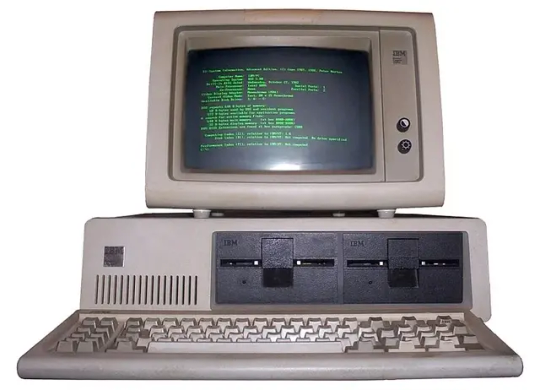

[ID 1: A picture of a IBM PC microcomputer. Its screen is black and is displaying many lines of bright green text. The background of the image is plain white. ID End]
[ID 2: A blue rectangle. On the left is a small star-like symbol, accompanied by white pixelated text that reads "Winamp.NET". On the right side, the blue is a little darker and there are 3 small icons, from right to left they are the window close button, displayed with a small white x surrounded by red, the maximum window button, and the minimize window button. ID End]
OP Note: Consider taking any of these names, pronouns, and titles, and replacing certain letters with matching numbers, like L33T SP3AK (leet speak)
[PT: OP Note: /PT End]
Names: Ace, Aero, Alexa, Ali, Benjamin/Ben, Blue/Blu, Courtney, Cyber, Cypher, Delphine, Dottie, Error, Gigi, Glitch, Hacker, Hal, Hewie, Hijack, Lenny, Lotus, Malware, Memphis, Missa, Missy, Nana/Nano, Neo, Nova, Oliver/Olivia/Olive, Pearl, Pixel, Ruby, Starz, Tecna, Terabyte (Tera), Vapor, Virus, Webster, Wilbur, Winnie
[PT: Names: /PT End]
Pronouns: .exe/.exes, 404/404s, aero/aeros, alt/alts, beep/beeps, bot/bots, byte/bytes, caps/locks, code/codes, ctrl/alt/dlt's, cyber/cybers, disk/disks, dot/com, error/errors, flash/drives, giga/bytes, hack/hacks, hi/jacks, html/htmls, jpeg/jpegs, key/keys, leet/speaks, mal/ware, meta/data, micro/softs, pdf/pdfs, png/pngs, ram/rams, sim/sims, tera/bytes, world/wide/web's, xe/xem, ze/zim, zip/files, leet/leets, 🤖/🤖's, 💽/💽's, 💾/💾's, 💿/💿's. 📀/📀's, 🧑💻/🧑💻's, 👨💻/👨💻's, 👩💻/👩💻's, 💻/💻's, 🖥️/🖥️'s, 🖨️/🖨️'s, ⌨️/⌨️'s, 🖱️/🖱️'s, 🖲️/🖲️'s, 🛜/🛜's, 👾/👾's, 🎮/🎮's, 🔈/🔈's, 🔉/🔉's, 🔊/🔊's, 🎧/🎧's, 📁/📁's, 📂/📂', 🗃️/🗃️'s
[PT: Pronouns: /PT End]
Titles: [Pronoun] Who Exists Only Digitally, The File Eater, The Hacker, The One Who Surfs The World Wide Web, The Shimeji, The Virtual [Noun], The Virtual/Digital One, Traveler of the Internet, Your AI Assistant,The Error Code
[PT: Titles: /PT End]
Labels: 2010scoric, Autistic Computer, Codestelic, Compgirlthing, Comphonum, Computerboygirl, Computercatic, Computergender, Computergijinka, Computerkin, Computerredacted, Compuvesil, Compuvior, Comrowth Cat, Database, Digiminalwebic, EdgyWebcoric, Errowebic, Gendercodex, Genderdotcom, Genderprogram, Gendersoftware, Guy.exeic, Hackgender, HTMLgender, Keyboardsoundic, Liqusecompic, Mechakeyboardic, Motherboard, Nyanwebia, Oldwebcitian, Phostechial, Purplewebpopup, Robotthing, Sillywebic, Technarian, Technogender, Trappedinacomputergender, Virisic, Virusthing, Web1.0spinnic, Webcoric, Webcoricatgen, Webcoristalgic, Webicannibal, Webirus, Y10Kglitchic, Virtualboygirl/Virtualgirlboy
[PT: Labels /PT End] Requested by Anon!

[ID 1: The same as ID 1. ID End] I lost the post I got the divider from and despite searching I just. dont know where it is, But if anyone can find the post its from lmk and I'll add a link ! thank you
#id pack#webcore id pack#tech id pack#computer id pack#virtual id pack#digital id pack#webcore npt#tech npt#virtual npt#computer npt#digital npt#retro computer id pack#retro computer npt#tina's id packs
61 notes
·
View notes
Text






One of the most defining 16bit computers was introduced in June 1985.
ATARI ST 520
DESIGN HISTORY & STRATEGY
The Atari ST series was born in a turbulent time: Atari had just been acquired by Jack Tramiel, founder of Commodore, after leaving that company. Tramiel pushed for a quick-to-market product to compete with the Apple Macintosh and Commodore Amiga.
Development time: Less than one year — an aggressive schedule for a 16-bit GUI-based machine.
Initial models: The Atari 520ST was the first to ship, showcased at CES in 1985.
Innovative design: All-in-one casing (mainboard + keyboard), like the Amiga 500, but with better modularity (external floppy drive, monitor, etc.).
Former C=64 developer Shiraz Shivji led the design team. He tells a story about the Atari ST/Commodore Amiga history (source) "It is very interesting that the Warner Atari difficulties were due to Tramiel’s Commodore. The Commodore 64 was much more successful (I would say wildly successful) compared to the Atari Computers such as the 800 and the 400. We were also taking away sales from the video games division, the Atari 2600. Jay Miner was at Atari in the old days and was involved in the design of their products. He left Atari to design the Amiga. Atari had funded some of this effort and had an option to buy the Amiga. When we took over Atari in July 1984, the first order of business was to decide what to do with this option. The problem was that the Amiga was not quite ready and would need a lot of money to acquire. We decided to pass on Amiga, but this put enormous pressure on our own development team. Commodore, on the other hand, did not have an internally developed 32-bit graphics-oriented machine and did not have the confidence to develop the machine internally. They ended up buying Amiga for between $25-$30 million and spent a further $20 million or so and yet came out with a product a little after Atari. The roles were reversed, the Atari ST has a Commodore pedigree, while the Amiga has an Atari pedigree!"
MIDI AND MUSIC PRODUCTION
The 520ST included built-in MIDI ports — a revolutionary move. At the time, most other computers needed expensive third-party MIDI interfaces.
Key Software:
Steinberg Cubase – became the industry standard for MIDI sequencing.
Notator – early version of what later evolved into Logic Pro.
Pro 24, Dr. T's, and Hollis Trackman – widely used for composing, sequencing, and syncing synthesizers.
Used by Artists:
Fatboy Slim composed with the ST well into the 2000s.
Jean-Michel Jarre, Vangelis, The Chemical Brothers, and Underworld used it in studio setups.
Many studios kept an Atari ST just for MIDI due to its tight timing and reliability.
SOFTWARE ECOSYSTEM
TOS/GEM: A fast and responsive GUI OS that was very usable on 512KB of RAM.
Productivity apps:
Calamus DTP – high-quality desktop publishing
NeoDesk – an improved desktop GUI
GFA Basic – a powerful programming environment
Graphics tools:
Degas Elite, NeoChrome – pixel art, animation
Spectrum 512 – used clever tricks to display 512 colors
While the Amiga had better graphics and sound, many games were first developed for the ST, then ported to Amiga. Key games:
Dungeon Master – first-person RPG with real-time mechanics
Carrier Command, Starglider, Blood Money, Rick Dangerous
Flight simulators, strategy, and adventure games flourished
CULTURAL IMPACT
In Europe (especially the UK, Germany, France, and Hungary):
The ST became a cornerstone of bedroom coding, Demoscene, and music production.
Local software houses and users created a vibrant community around the machine.
The Atari ST was used in schools, small studios, and households well into the early '90s.
In education: The ST's affordability and easy-to-use software made it a favorite in European schools and computer labs.
DECLINE & LEGACY
By the early 1990s, the ST line was losing ground to IBM-compatible PCs and faster Amigas.
Later models like the STE, TT030, and Falcon 030 tried to revitalize the line, with limited success.
Atari shifted toward consoles (like the Jaguar) and left the computer market.
Long-term legacy:
The Atari ST's MIDI legacy lives on — it helped standardize digital music production workflows.
Many musicians and retrocomputing fans still collect and use STs today.
A vibrant retro software/demo scene remains active, especially in Europe.
#atari#atari st#anniversary#tech#technology#old tech#retrocomputing#retro computing#retro gaming#retrogaming#midi#cubase#calamus#notator#degas elite#16bit#Dungeon Master#Carrier Command#Starglider#Blood Money#Rick Dangerous#Flight simulators#80s#80s computer#fatboy slim#chemical brothers#jean michel jarre#vangelis
12 notes
·
View notes
Text





🎄💾🗓️ Day 5: Retrocomputing Advent Calendar - Compaq DeskPro 1 🎄💾🗓️
The Compaq Deskpro Model 1, introduced in 1984, featured an 8 MHz Intel 8086 CPU, which had better performance than the IBM PC's 4.77 MHz 8088 processor. It combined Color Graphics Adapter (CGA) graphics with high-resolution Monochrome Display Adapter (MDA) text, delivering enhanced text display. This improved speed and better text clarity over IBM PCs equipped with standard graphics. The Deskpro's architecture allowed for various disk configurations and was an influence for many personal computers.
Check out The Centre for Computing History's Compaq DeskPro 1 page (and other resources there!)
And here's a somewhat "first computer" story from Adafruit team member Anne!
"In my first year of EE (junior) we were limited to larger computers. My senior year we could check out Compaq Portables (really luggables) which allowed us to run C compilers and compile cross assemblers onto a machine for ease of use.
When I graduated, I needed a computer and went to a PC store. They contrasted the IBM PC/XT 8088 with the newly released Compaq DeskPro 1. With an 8086 processor running at 7.16 MHz, it was faster. It came with monochrome graphics (green or yellow) with both CGA and text mode video. I bought the dual 5.25" floppy version to start, to have enough money for an IBM ProPrinter for output.
The machine was great and I spent many hours on programming, databases, word processing and more. It was upgraded eventually to a 30MB RLL hard disk and an added 720k 3.5" floppy."
It got through the '286 era and was supplanted by a '386 machine. I still have the DeskPro and I intend to resurrect it in the not too distant future.
Have first computer memories? Post’em up in the comments, or post yours on socialz’ and tag them #firstcomputer #retrocomputing – See you back here tomorrow!
#compaqdeskpro#retrocomputers#computinghistory#vintagepc#1980scomputing#intel8086#pcarchitecture#desktophistory#cgagraphics#oldcomputers#classictech#8086cpu#programminghistory#vintagetech#earlypcs#pcbuilding#nostalgiatech#technostalgia#pcstory#retroadvent
25 notes
·
View notes
Note
Hello!!!
A friend of mine really, really loves your art style and wants to know if you have any tips for getting the smooth geometric designs you get on your lifeless art?
Thank you so so much (and your art is gorgeous!! We both love your objectum pieces and ultraviolet pieces!!!)
i think smooth geometric designs take up like. two parts of an art process, one of which is "designing something in a geometric fashion" and the other of which is "making the design look smooth in some way".
so below are some examples of how i work out designs and geometric shapes when drawing things. usually it is the general process as many other artists advise, start with drawing out the overall shape. a keyboard is a rectangle with some more sides. a water bottle is a rectangle with curves. a pen can be just a rectangle. the sun is a circle. and then after i break stuff down into basic shapes i look for how i can make the details clearer.


like with the ibm pc (left) you can see that theres a little gap in between the part of the computer with the screen and the rest of it. if i want to make that depth more noticeable, what i can do is either make that little segment a different color from the top and bottom parts of the computer, or i can simply put space around it to make it clear that its a separate segment. so you can see when i color in the computer in black, the middle rectangle sement is surrounded by white and it has a bit more distinction than it would without that.
same thing for the pen in the given example on the right, i visualize the overall shape as a rectangle with a few extra details. then i add the details in shape, color it in, and erase out a few lines where the pen would be cut into segments. so really for my geometic shapes my approach is just to divide things up into a few simpler parts.
now to make the stuff look clean or smooth usually i erase things out instead of drawing all the lineart. you can see in my earlier example of the pen that i erase parts of the pen rather than draw new lines in, i think that this keeps the form and shape of the pen better than drawing a line over the pen itself.
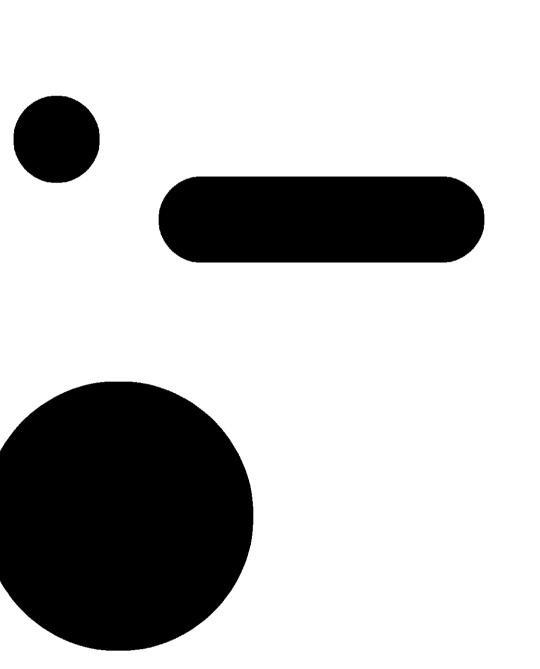
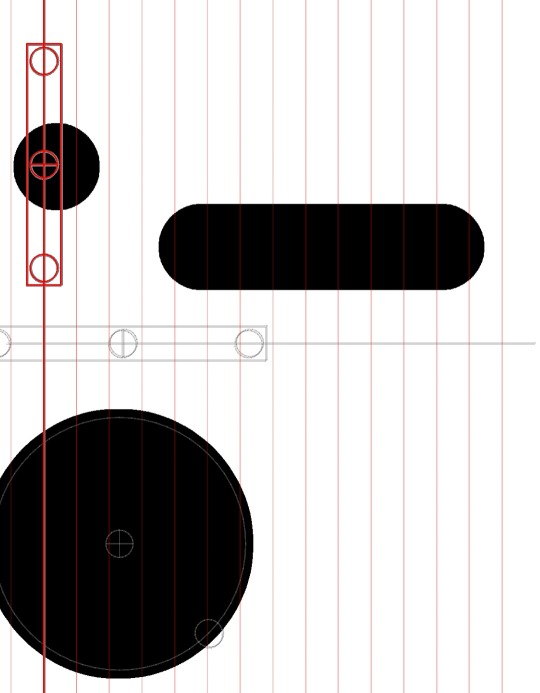

for specific tools, i use the digital pen in ibispaint x, which lets me get very finicky with details down to individual pixels. but also even if you don't have that specific brush, using tools like a circle tool or ruler tool to draw/erase straight lines is a big thing i do. because nobody can draw perfect straight lines, and its near-impossible to erase in a perfect circle. in the above examples you can see the horizontal brushstroke ive made, i then use a ruler tool at 90 degrees to erase some of the right and left ends of the stroke, creating a nice neat little rectangle. i do this a lot for all of my pieces, especially in more recent ones like the building piece and such.
but yea all in all my art style was made to be easier and make shapes more clear for myself, usually i just find myself focusing on whether i can illustrate something nice with simple lines and shapes
21 notes
·
View notes
Photo
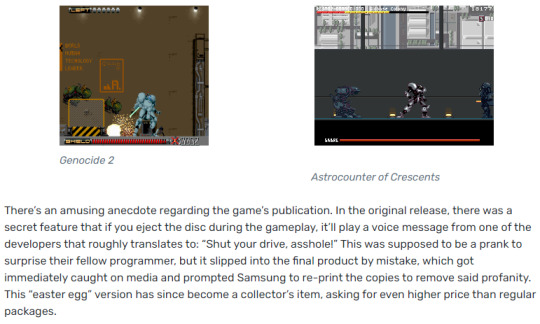

Astrocounter of Crescents (불기둥 크레센츠) (S&T On-Line / Samsung - IBM PC - 1996)
#gonna stream this game eventually#Astrocounter of Crescents#불기둥 크레센츠#IBM PC#IBM#PC game#PC games#mechs#mech games#easter egg#korean games#korean game#robots#beat em up
42 notes
·
View notes
Note
What kind of work can be done on a commodore 64 or those other old computers? The tech back then was extremely limited but I keep seeing portable IBMs and such for office guys.
I asked a handful of friends for good examples, and while this isn't an exhaustive list, it should give you a taste.
I'll lean into the Commodore 64 as a baseline for what era to hone in one, let's take a look at 1982 +/-5 years.
A C64 can do home finances, spreadsheets, word processing, some math programming, and all sorts of other other basic productivity work. Games were the big thing you bought a C64 for, but we're not talking about games here -- we're talking about work. I bought one that someone used to write and maintain a local user group newsletter on both a C64C and C128D for years, printing labels and letters with their own home equipment, mailing floppies full of software around, that sorta thing.
IBM PCs eventually became capable of handling computer aided design (CAD) work, along with a bunch of other standard productivity software. The famous AutoCAD was mostly used on this platform, but it began life on S-100 based systems from the 1970s.
Spreadsheets were a really big deal for some platforms. Visicalc was the killer app that the Apple II can credit its initial success with. Many other platforms had clones of Visicalc (and eventually ports) because it was groundbreaking to do that sort of list-based mathematical work so quickly, and so error-free. I can't forget to mention Lotus 1-2-3 on the IBM PC compatibles, a staple of offices for a long time before Microsoft Office dominance.
CP/M machines like Kaypro luggables were an inexpensive way of making a "portable" productivity box, handling some of the lighter tasks mentioned above (as they had no graphics functionality).
The TRS-80 Model 100 was able to do alot of computing (mostly word processing) on nothing but a few AA batteries. They were a staple of field correspondence for newspaper journalists because they had an integrated modem. They're little slabs of computer, but they're awesomely portable, and great for writing on the go. Everyone you hear going nuts over cyberdecks gets that because of the Model 100.
Centurion minicomputers were mostly doing finances and general ledger work for oil companies out of Texas, but were used for all sorts of other comparable work. They were multi-user systems, running several terminals and atleast one printer on one central database. These were not high-performance machines, but entire offices were built around them.
Tandy, Panasonic, Sharp, and other brands of pocket computers were used for things like portable math, credit, loan, etc. calculation for car dealerships. Aircraft calculations, replacing slide rules were one other application available on cassette. These went beyond what a standard pocket calculator could do without a whole lot of extra work.
Even something like the IBM 5340 with an incredibly limited amount of RAM but it could handle tracking a general ledger, accounts receivable, inventory management, storing service orders for your company. Small bank branches uses them because they had peripherals that could handle automatic reading of the magnetic ink used on checks. Boring stuff, but important stuff.
I haven't even mentioned Digital Equipment Corporation, Data General, or a dozen other manufacturers.
I'm curious which portable IBM you were referring to initially.
All of these examples are limited by today's standards, but these were considered standard or even top of the line machines at the time. If you write software to take advantage of the hardware you have, however limited, you can do a surprising amount of work on a computer of that era.
44 notes
·
View notes
Text
What is the difference between network support and IT support?
Network Support Services

When managing technology in a business, terms such as Network Support and IT support often arise. While they may sound similar, they cover different areas of technology services. Understanding the difference can help businesses select the most suitable support for their specific needs.
What Is IT Support?
IT support refers to general technical assistance that helps users and businesses maintain their computer systems and networks. As this includes and consists of setting up hardware and software resources, troubleshooting errors, installing applications, managing user accounts, and fixing computer-related issues. IT support is often the first line of help when there’s a problem with your PC, email, or printer.
In short, IT support focuses on helping users interact with technology smoothly on the front end—solving problems that affect individual devices and users.
What Is Network Support?
Network assistance, on the other hand or side, is more focused on maintaining and managing the backend infrastructure that connects all devices in a business with its observations. As this includes routers, switches, firewalls, servers and wireless access points in it. Network assistance assures that the entire system runs securely, efficiently, and without interruptions.
Everyday network support tasks include and consists of activities:
Monitoring the network performance and observations.
Preventing and responding towards the security threats and potential checks.
Managing the IP addresses and server uptime with its implementation into the system.
Ensuring smooth internal and external communication.
Troubleshooting internet connectivity and network failures.
In essence, Network assistance maintains the foundation of your digital environment and existing settings, keeping it strong and reliable for better outcomes and deliverables. Without a properly managed network, IT devices and software may fail to function correctly and may result in significant concerns.
How Do They Work Together?
Both IT support and Network Support are essential and a must for a complete tech ecosystem and acceptable outcomes. While IT supports and aids the individual users and their machines with its expertise, meanwhile network support keeps the systems update behind the scenes running smoothly. Together, they ensure that businesses can operate efficiently without technical disruptions. Many businesses rely upon and prefer to stay updated with trusted technology service providers, such as Suma Soft, IBM, and Cyntexa, which offer both IT and Network assistance and support tailored to meet the specific needs of modern organizations as per the business demand and objective concern. Selecting the optimal blend of both assures long-term performance, stability, and sustainable growth with its adaptation.
#it services#technology#saas#software#saas development company#saas technology#digital transformation
2 notes
·
View notes
Text

In the early 1980s, personal computers were transitioning from text-based interfaces to more visually engaging environments. Sierra On-Line’s King’s Quest: Quest for the Crown, developed in 1984 for the IBM PCjr, was a landmark achievement in this evolution. It was not just another adventure game; it redefined the genre by leveraging the limited hardware capabilities of the time to create an immersive, interactive experience that felt years ahead of its contemporaries. Technical Innovations in King's Quest
1. The Birth of a 3D Adventure Game
At a time when most games were either text-based or limited to simple 2D visuals, King’s Quest introduced a pseudo-3D graphical environment. Players could guide the protagonist, Sir Graham, through a dynamic, scrolling landscape, where he could walk behind or in front of objects—an innovation known as "2.5D."
Pseudo-3D Effect: Achieved through creative use of layers, the AGI (Adventure Game Interpreter) engine divided the screen into foreground, background, and player layers. This gave the illusion of depth and interactivity.
Character Movement: The freedom to move in eight directions and interact with objects in a visually convincing space set a new standard for adventure games.
2. Adventure Game Interpreter (AGI) Engine
Sierra developed the AGI engine specifically for King’s Quest. This software framework was groundbreaking for its time, allowing:
Cross-Platform Compatibility: AGI was portable across different systems, from the IBM PCjr to later platforms like the Apple II and Tandy 1000.
Event-Driven Programming: AGI allowed designers to script events and interactions, decoupling game logic from graphical rendering—a novel approach in the early 80s.
3. Advanced Graphics for the IBM PCjr
The IBM PCjr was an ambitious but underpowered machine, featuring:
Intel 8088 Processor (4.77 MHz): A modest CPU that could struggle with heavy computations.
16-Color Graphics (CGA Palette): While most PCs supported only four colors in CGA mode, the PCjr's extended graphics capabilities allowed for richer visuals.
3-Voice Sound (TI SN76496 Chip): This was a significant improvement over the beeps of the PC speaker, enabling a more immersive auditory experience.
King’s Quest took full advantage of these features:
Rich Color Palette: By designing scenes with careful attention to the 16-color limit, Sierra created lush, vibrant environments that brought the fairytale world to life.
Smooth Animation: Despite hardware limitations, the game’s character animations and environment transitions were fluid and detailed.
4. Text Parser and Command System
While maintaining the classic adventure game tradition of text input, King’s Quest improved upon the interface:
Contextual Parsing: The text parser was more forgiving and sophisticated than previous games, interpreting a wider range of player inputs like "Take sword" or "Open door."
Visual Feedback: Unlike purely text-based games, the parser’s output was directly reflected in the graphical world, making the player’s actions feel meaningful and connected.
5. Disk Streaming and Memory Optimization
Given the IBM PCjr's limited 128 KB of RAM and floppy disk storage, Sierra engineers implemented innovative solutions to manage resources:
Dynamic Asset Loading: Only the necessary graphics, animations, and logic were loaded into memory at a time, minimizing RAM usage.
Compression Techniques: Graphics and animations were heavily compressed to fit on the game’s floppy disks, requiring clever algorithms to decompress assets on-the-fly.
The Impact of King’s Quest
The technical achievements of King’s Quest went beyond its hardware. It had a profound impact on the gaming industry and paved the way for future innovations.
Pushing Hardware to Its Limits: By making the most of the IBM PCjr’s unique capabilities, King’s Quest demonstrated what was possible with even modest computing power.
Setting a Standard for Interactive Storytelling: The game’s rich narrative, combined with its visuals and player agency, set the benchmark for future adventure games.
Expanding the Gaming Audience: The colorful, family-friendly design attracted a broader audience, including casual gamers and younger players.
Influencing Game Design: The AGI engine became the foundation for future Sierra titles, including Space Quest, Police Quest, and Leisure Suit Larry.
#IBM#IBM PCjr#PCjr#Sierra On-line#Sierra Online#On-line Systems#King's Quest#KQ 1#Impact#Pixel Crisis
6 notes
·
View notes
Text
WHAT THEY DONT TELL YOU ABOUT COMPUTERS IS THAT THEY ARE TOOLS FOR AUTOMATING BUSINESS PROCESSES. IBM DOMINATED THE PERSONAL COMPUTER INDUSTRY DESPITE THE IBM PC BEING SHIT WITH NO FEATURES BECAUSE LAZY PROCUREMENT DEPARTMENTS AND DIMWITTED BUSINESSMEN TRUSTED THE IBM BRAND NAME. IN A BETTER WORLD BUSINESSMEN ARE A CHATTEL SLAVE CASTE SLAUGHTERED FOR THEIR ORGANS IF THEY DON'T MAKE LINE GO UP AND COMPUTERS ARE TOOLS FOR MORALLY CORROSIVE MUSIC, RENDERING LAVISH IMAGERY OF HERMAPHRODITIC ANTHROPOMORPHS IN ELABORATE MYTHOLOGICAL SCENES FUCKING EACH OTHER, ETC. WE MUST DECLARE THE ABSOLUTE SUPREMACY OF THE CULTURAL ARISTOCRACY OVER THE PETIT-BOURGEOISIE. ATROCIOUS NOISE SHALL BE THE FUNDAMENTAL PRINCIPLE OF THE STATE! HAIL COCK VICTORY
7 notes
·
View notes
Text
Vesa De X
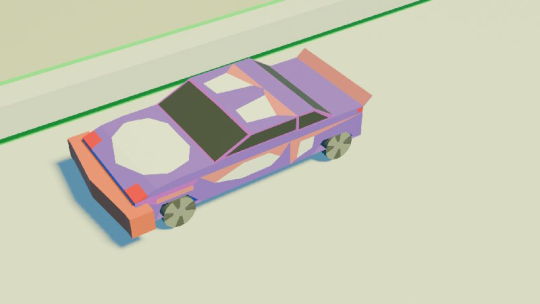
Three dimensional scene for today based on videogame Nascar Racing 2 for computer system Ibm Pc Ms Dos. Three dimensional racing, with cars. Powerful engines. Lots of automobiles. And circle tracks. And this is for Ms Dos! Cool such a computer 486dx2. And it can show three dimensional graphics.

And this is my three dimensional scene based on. Game which is looks like 486 processor, I remember 2 mb video memory. And Ms Dos. Cars are riding the track. Day. And you run these tracks. Make control in turns. At the straight lines make it faster. Here there are circles. But don’t try to think that it is easy. There are lots of circles! And lots of cars with you.
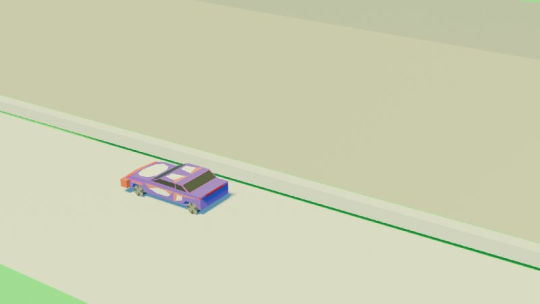
Arcade racing. Day and night. And different number of racers. For example, 8 racers. Or you can ride one car. For interest. To make your time better. And train before track with big number of racers. Maybe even 16,24, or 32 racers. So that’s a lot!

Arcade racing – it is so funny! And it is very interesting! Weekend, to race. And have relax! So I am a fan for myself a fan of racing games, to launch them. For example, rally. So I need also a Nascar racing something to try and new and old.
Such a mysterious racing genre for me!
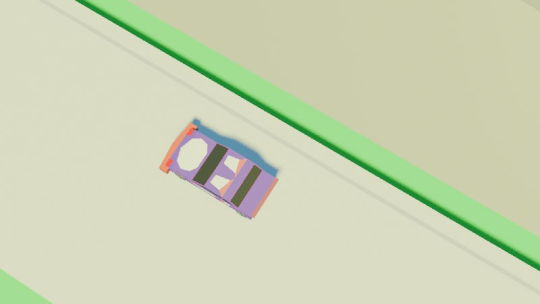
I, also, lie a title. Vesa compatible videocards. I often select this option in settings. Even, not knowing what does it mean. But it works for me. How cool it was to race in racing games, especially three dimensional and arcade! And also, this Nascar. Something new. There it were lots of cars! They race in a circles! Wow! It is also so interesting! Arcade!! And racing!

How cool to feel summer and race the game! And behind the window maybe it is autumn or even winter. Excellent 486 theme! And Vesa include!

Dima Link is making retro videogames, apps, a little of music, write stories, and some retro more.
WEBSITE: http://www.dimalink.tv-games.ru/home_eng.html ITCHIO: https://dimalink.itch.io/
TUMBLR: https://dimalink.tumblr.com/ BLOGGER: https://dimalinkeng.blogspot.com/ MASTODON: https://mastodon.social/@DimaLink
#blender#3d scene#3d renderer#low poly#ms dos#easy 3d#vesa#486 dx2#racing#track#road#nascar#competition#3d graphics#videogame#digital art#fast#speed#circle#endurance#retro game#arcade#cars#engine#start your engine
5 notes
·
View notes
Text
youtube
Thanks to a post from the Found Footage Festival, I just rediscovered this ancient workout tape my elementary school gym teacher would make us do in gym class in the 90s.
I'd been wonder what this video was for YEARS. The only thing I remembered was spandex and "stretch like a tiger, 1, 2..." (and also having a vague childhood crush on the girl lmao). But searches for stuff like "aerobics video stretch like the tiger" or "workout video stretch like a tiger" resulted in NOTHING. I even considered signing up for some workout tape enthusiast forum I found and asking there...
But THIS IS IT!!!
Y'know, kids really liked gym class in elementary school, cuz it was kinda like a 2nd recess, right? When the homeroom teacher said it was time to line up for gym class, there was a chorus of tiny "yessssss!!"es, and everyone was excited to get to run around and have fun and play games.
But THIS... this was not fun, and it was also not games.
So you can imagine the sinking feeling of walking into the gym and seeing the TV-on-a-cart, because you knew today was going to be a day with The Tape. This tape was a staple of our gym class experience from 1st grade through 5th; the threat of which always loomed overhead.
In later years, the cool kids would stand in the way, way back of the gym and phone it in, but usually the teacher would yell at them to come forward because there's no way they could make out the video on that 30 inch tube (if that). But essentially everyone (particularly the boys) would phone it in with this tape. Cuz it SUCKED.



Apparently this tape was released in 1985!!(??!!)... so my gym teacher had this thing in rotation for well over a DECADE. God... well, at least he got his 30 bucks worth out of it.
By the late 90s, he finally retired the tape (...I think) in favor of the hot new craze... Tae Bo.
That was a little better.
Maybe.
But anyways, I'm very happy to finally have this ancient elementary school mystery of mine solved. I think I'll force my old friends to watch it and partake in it next time we get together.
(Now if I could just find that one kids paint program we had on our fancy new Windows 98 PCs that replaced the old IBMs from the 80s...)
3 notes
·
View notes
Text
Smart Port Market Size, Share, Analysis, Forecast, and Growth Trends to 2032: Tech-Powered Terminals Redefine Port Efficiency
The Smart Port Market Size was valued at USD 2.88 Billion in 2023 and is expected to reach USD 19.63 Billion by 2032 and growing at a CAGR of 23.82% over the forecast period 2024-2032.
The global SMART PORT MARKET is set for a period of unprecedented expansion, with a market size valued at USD 2.88 billion in 2023. Projections indicate a surge to an impressive USD 19.63 billion by 2032, demonstrating a robust Compound Annual Growth Rate (CAGR) of 23.82% over the forecast period from 2024 to 2032. This remarkable growth is fueled by an urgent global drive towards enhancing operational efficiency, bolstering security, and embracing sustainable practices across maritime logistics. Ports worldwide are rapidly adopting cutting-edge technologies to streamline operations, reduce environmental impact, and meet the escalating demands of global trade.
Smart Port Market in the US: Driving Innovation and Efficiency in Maritime Logistics
The accelerating evolution of the SMART PORT MARKET underscores a fundamental shift in how maritime trade is conducted, transitioning from traditional operational models to integrated, technologically advanced ecosystems. This transformation is not merely about automation but encompasses a holistic approach to data-driven decision-making, real-time visibility, and environmental stewardship. As global trade volumes continue to rise and environmental regulations tighten, ports are investing heavily in smart solutions to ensure resilience, reduce costs, and maintain a competitive edge. This signifies a pivotal moment where digital innovation becomes the cornerstone of future-proof port infrastructure.
Get Sample Copy of This Report:https://www.snsinsider.com/sample-request/3117
Market Keyplayers:
ABB
Siemens
IBM
Huawei
General Electric
Schneider Electric
Cisco Systems
Kongsberg Gruppen
Accenture
Wartsila
Navis
Trelleborg Marine Systems
CyberLogitec
Kalmar
Cavotec
SAP SE
Royal HaskoningDHV
IndigoVision
Microsoft
Market Analysis
The increasing global trade volumes necessitate highly efficient and scalable port operations, driving demand for smart technologies to manage larger ships and higher cargo throughput.
Governments worldwide are actively initiating and supporting smart port development through policies and investments, recognizing their crucial role in national and regional economic growth and logistical efficiency.
There's a growing imperative to enhance operational efficiency, security, and safety within port environments, which smart port solutions, such as advanced surveillance and automated cargo handling, directly address.
Market Trends
Pervasive Integration of AI, IoT, and Automation: Advanced AI and Machine Learning algorithms are optimizing vessel scheduling, berth allocation, and predictive maintenance. IoT sensors provide real-time data for comprehensive visibility, while automation (e.g., automated cranes, autonomous guided vehicles) is streamlining cargo handling and reducing manual errors.
Strong Focus on Green Port Initiatives: Sustainability is a key driver, leading to increased adoption of renewable energy sources, electric equipment, shore-to-ship power systems, and smart waste management to significantly reduce ports' carbon footprint and comply with stricter environmental regulations.
Market Scope
The Smart Port Market encompasses a wide array of technological solutions and infrastructure upgrades, designed to optimize every facet of port operations. Key elements include:
Terminal Automation & Cargo Handling: Automated cranes, robotic systems, and autonomous vehicles for efficient loading, unloading, and internal transport of cargo.
Port Community Systems (PCS): Integrated digital platforms for seamless information exchange and collaboration among all port stakeholders (shipping lines, customs, logistics providers).
Smart Safety & Security: AI-powered surveillance, real-time monitoring, and cybersecurity measures to enhance safety protocols and protect critical infrastructure.
Traffic Management Systems (TMS): Intelligent systems for optimizing vessel movement, berth allocation, and internal port traffic flow.
Smart Port Infrastructure: Deployment of IoT sensors, 5G networks, cloud computing, and digital twin technology for real-time monitoring, predictive analytics, and simulation.
Forecast Outlook
The future of the Smart Port Market is characterized by relentless innovation and an unwavering commitment to efficiency and sustainability. As global maritime trade expands and environmental concerns intensify, smart ports will emerge as vital hubs, leveraging advanced technologies to navigate complexities with unparalleled agility. This evolution will lead to increasingly interconnected and autonomous port ecosystems, where data-driven insights underpin every decision, and operations are optimized for maximum throughput, minimal environmental impact, and enhanced security. The coming years will solidify smart ports as the cornerstone of resilient and highly competitive global supply chains.
Access Complete Report:https://www.snsinsider.com/reports/smart-port-market-3117
Conclusion
The projected growth of the Smart Port Market to USD 19.63 billion by 2032, at a remarkable CAGR of 23.82%, unequivocally highlights its transformative power. For port authorities, logistics providers, and shipping companies, embracing smart port technologies is no longer a luxury but a strategic imperative. These innovations offer a clear pathway to unlocking new levels of operational efficiency, bolstering security, and achieving critical environmental targets. Investing in smart port solutions represents a proactive step towards building resilient, sustainable, and highly competitive maritime operations, essential for navigating the complexities of global trade in the 21st century.
Related Reports:
U.S.A Smart Port Market: Discover cutting-edge logistics shaping future-ready ports
U.S.A drives the future of enterprise AI with unmatched innovation and scalability
About Us:
SNS Insider is one of the leading market research and consulting agencies that dominates the market research industry globally. Our company's aim is to give clients the knowledge they require in order to function in changing circumstances. In order to give you current, accurate market data, consumer insights, and opinions so that you can make decisions with confidence, we employ a variety of techniques, including surveys, video talks, and focus groups around the world.
Contact Us:
Jagney Dave - Vice President of Client Engagement
Phone: +1-315 636 4242 (US) | +44- 20 3290 5010 (UK)
0 notes
Text
Virtual Machine Market Soars, Anticipated to Hit US$ 177.3 Billion Valuation by 2033
The worldwide virtual machine industry is expected to reach a valuation of US$177.3 billion by 2033. The demand for virtual machine systems and solutions has surged due to the widespread use of cloud computing technologies and increasingly demanding applications by organisations worldwide. Organisations can also save money and effort by using virtual machines.
Cloud computing enables the rapid deployment of several instances of the same virtual machine to better handle traffic spikes. Cloud computing technology offers virtual machines (VMs) more affordable, highly scalable, and reliable infrastructure. Cloud virtual machines (VMs) may meet the most stringent computing needs of companies. Increasing and decreasing computer capacity in line with company needs is made simple by technology.
Key Takeaways: Virtual Machine Market
Exponential growth is expected as FMI forecasts the market to exhibit 19.7% CAGR between 2021 and 2022
Backed by strong network infrastructure, the U.S. will account for over 80% sales in North America
Rising digitization will enable the U.K. to exhibit a remarkable 27.5% Y-o-Y growth in 2021
FMI forecasts both Germany and France to exhibit double-digit growth in the Europe virtual machine market
China will remain dominant in East Asia, followed by Japan and South Korea
COVID-19 Impact Analysis on virtual machine Market
The widespread impact of novel coronavirus pandemic continues to impact every organization — large or small — their employees, and the customers they serve. The spread of a pandemic has rapidly increased the use of new and existing technologies. As consumers continue to lock down, millions of people are forced to adopt work from home policies, which has resulted in increasing demand for cloud computing technologies.
The closure of physical workspaces and transportation networks has forced many businesses and public bodies to adopt virtual technologies. For some individuals, working from home is as simple as taking their laptops home, but others may have specialized PCs and high configured machines that are not as easy to transport back and forth between a home office and workplace.
As a result, over the past few months VM vendors have witnessed the acceleration of VM and cloud computing technologies sales. The market has shown significant growth during the pandemic, it has grown by nearly 3% — 5% in Q1-Q3 2020. However, the market is expected to become streamline by the end of 2021.
Growing Adoption of Cloud VMs in Organization
The adoption of VMs is increasing in organization as employees can have access to multiple VMs and their data from multiple devices at the same time. This increases productivity by allowing employees to access necessary data from anywhere. The adoption of VMs also reduces the down time that IT departments needs to manually install new software or update software, and helps increase the productivity of IT staff as they can focus on other important task.
Who is Winning?
To meet the unprecedented demand for VMs from consumers, VM vendors are taking huge efforts to build advance computing VMs with high storage capacity and processing powers. Cloud VM offers the ability to use on-demand VM services to achieve cost efficiency and business continuity and enable organizations to rapidly accelerate their digital business transformation plans. The increased use of VM services amid COVID-19 pandemic has accelerated growth of the VM market.
Some of the leading players operating in the market are Microsoft Corporation, VMware, Inc., Amazon Web Services, Inc., Google, IBM Corporation, Oracle Corporation, Alibaba Group, Hewlett Packard Enterprise, Citrix, Huawei Technologies, Proxmox Server Solutions GmbH, Parallels Inc.
Key Segments Covered of the Virtual Machine Market
Type
Process/Application Virtual Machines
System Virtual Machines
Platform
Windows
Mac
Linux
Others
Enterprise Size
Small & Medium Enterprises (SMEs)
Large Enterprises
Industry
BFSI
IT & Telecom
Retail
Healthcare
Manufacturing
Government
Others
Region
North America
Latin America
Europe
East Asia
South Asia & Pacific
Middle East & Africa (MEA)
About Future Market Insights (FMI)
Future Market Insights, Inc. (ESOMAR certified, recipient of the Stevie Award, and a member of the Greater New York Chamber of Commerce) offers profound insights into the driving factors that are boosting demand in the market. FMI stands as the leading global provider of market intelligence, advisory services, consulting, and events for the Packaging, Food and Beverage, Consumer Technology, Healthcare, Industrial, and Chemicals markets. With a vast team of over 400 analysts worldwide, FMI provides global, regional, and local expertise on diverse domains and industry trends across more than 110 countries. Join us as we commemorate 10 years of delivering trusted market insights. Reflecting on a decade of achievements, we continue to lead with integrity, innovation, and expertise.
Contact Us:
Future Market Insights Inc. Christiana Corporate, 200 Continental Drive, Suite 401, Newark, Delaware - 19713, USA T: +1-347-918-3531 For Sales Enquiries: [email protected] Website: https://www.futuremarketinsights.com LinkedIn| Twitter| Blogs | YouTube
0 notes